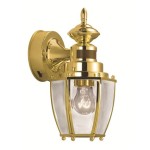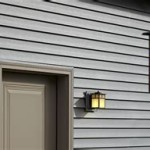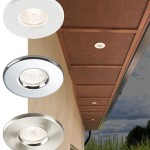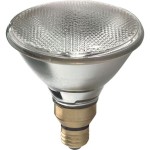How Does An Outdoor Light Sensor Work?
Outdoor light sensors are ubiquitous in modern life, playing a crucial role in everything from automated lighting systems to sophisticated security setups. They function as miniature sentinels, constantly monitoring the ambient light levels and triggering specific actions based on predetermined thresholds. Understanding the principles behind their operation is key to appreciating their versatility and effectiveness.
At its core, an outdoor light sensor is an electronic device designed to detect the presence, absence, or intensity of light. The information gathered can then be used to control other devices, such as turning on outdoor lights at dusk or activating a security system when darkness falls. Their durability and ability to withstand harsh weather conditions are critical factors in their design and selection for outdoor applications.
Several types of light sensors are employed in outdoor settings, each with its own strengths and weaknesses. The choice of sensor depends largely on the specific application and the required level of precision. These sensors translate the intensity of light into an electrical signal, which is then processed by a control circuit.
The Photodiode Sensor: A Common Choice
The photodiode is a semiconductor device that converts light into electrical current. When photons (light particles) strike the photodiode's surface, they excite electrons, creating electron-hole pairs. These pairs are then swept across the junction of the diode by an internal electric field, generating a current proportional to the intensity of the light.
Photodiodes can be operated in two main modes: photovoltaic mode and photoconductive mode. In photovoltaic mode, the photodiode generates a voltage when exposed to light, similar to a solar cell. This mode is often used in low-power applications where the current generated by the photodiode is sufficient to directly drive a load. In photoconductive mode, an external voltage is applied to the photodiode, and the current through the diode changes in response to the light intensity. This mode is typically used when higher sensitivity and faster response times are required.
Outdoor light sensors utilizing photodiodes often incorporate filters to improve their performance. These filters can block unwanted wavelengths of light, such as infrared radiation, which can interfere with accurate light level measurements. They are relatively inexpensive and provide a good balance between sensitivity and cost.
One notable advantage of photodiodes is their fast response time. They can react to changes in light intensity very quickly, making them suitable for applications that require rapid detection of light fluctuations. This characteristic is particularly useful in security systems that need to respond immediately to changes in the ambient lighting.
Another benefit is that photodiodes tend to be very stable and reliable over long periods of time, even when exposed to harsh environmental conditions. They are less susceptible to temperature variations than some other types of light sensors and have a long lifespan, making them suitable for long-term outdoor use.
The Photoresistor (or Light-Dependent Resistor): Simplicity and Affordability
A photoresistor, also known as a light-dependent resistor (LDR), is another type of light sensor commonly used in outdoor applications. Its resistance changes depending on the amount of light that falls on its surface. In darkness, the photoresistor has a high resistance, typically in the megaohm range. As the light intensity increases, the resistance decreases, potentially dropping to a few hundred ohms in bright sunlight.
Photoresistors are based on the principle of photoconductivity. When light strikes the semiconductor material of the photoresistor, it excites electrons, increasing the number of charge carriers available and reducing the resistance of the material. The relationship between light intensity and resistance is typically non-linear, but it is predictable and can be calibrated to provide accurate light level measurements.
The simplicity of photoresistors makes them attractive for many applications. They are relatively inexpensive to manufacture and require simple circuitry to operate. Typically, a photoresistor is connected in series with a fixed resistor to form a voltage divider. The voltage at the junction between the two resistors varies with the light intensity, providing a signal that can be used to trigger a relay or other control device.
One limitation of photoresistors is their relatively slow response time. They take longer to react to changes in light intensity compared to photodiodes. This can be a drawback in applications that require rapid detection of light fluctuations. However, for applications where a slower response is acceptable, such as turning on outdoor lights at dusk, the slow response may not be a significant issue.
Furthermore, photoresistors can be more susceptible to temperature variations and aging effects than photodiodes. The resistance of a photoresistor may change with temperature, which can affect the accuracy of light level measurements. Over time, the sensitivity of a photoresistor may also decrease, requiring recalibration or replacement.
The Phototransistor: Amplified Sensitivity
A phototransistor is a semiconductor device that combines the light sensitivity of a photodiode with the amplification capabilities of a transistor. When light strikes the base region of the phototransistor, it generates a base current that is proportional to the light intensity. This base current is then amplified by the transistor, resulting in a larger collector current.
Phototransistors offer higher sensitivity than photodiodes. This means that they can detect lower levels of light and are more responsive to changes in light intensity. This increased sensitivity makes them suitable for applications that require accurate light level measurements in dimly lit environments.
Phototransistors can be operated in common-emitter or common-collector configurations. In the common-emitter configuration, the phototransistor provides voltage gain and current gain. In the common-collector configuration, the phototransistor provides current gain but no voltage gain. The choice of configuration depends on the specific application requirements.
However, phototransistors are generally slower than photodiodes. The amplification process introduces additional delays, which can limit the response time of the sensor. They are also more susceptible to noise than photodiodes, which can affect the accuracy of light level measurements.
The choice of phototransistor often comes down to a trade-off between sensitivity and speed. If high sensitivity is required and a slower response time is acceptable, a phototransistor may be a good choice. However, if a faster response time is required, a photodiode may be more suitable.
Many outdoor light sensors incorporating phototransistors also include circuitry to compensate for temperature variations and noise. These circuits help to improve the accuracy and reliability of the sensor.
Calibration and Threshold Setting
Regardless of the type of light sensor used, calibration is essential to ensure accurate and reliable performance. Calibration involves adjusting the sensor's output to match known light levels. This typically involves using a reference light source of known intensity and adjusting the sensor's gain or offset to match the expected output.
An important aspect of outdoor light sensor operation is the setting of thresholds. A threshold is a specific light level at which the sensor triggers a particular action. For example, a light sensor used to control outdoor lighting may have a threshold set at a specific lux value. When the ambient light level falls below this threshold, the sensor triggers a relay that turns on the lights.
The threshold level must be carefully chosen to ensure that the lights are turned on at the appropriate time. If the threshold is set too high, the lights may turn on too early, wasting energy. If the threshold is set too low, the lights may not turn on until it is too dark.
Many outdoor light sensors include adjustable threshold settings. This allows users to fine-tune the sensor's performance to match their specific needs. Some sensors also include hysteresis, which is a small difference between the turn-on and turn-off thresholds. This helps to prevent the lights from flickering on and off rapidly when the ambient light level is close to the threshold.
In some sophisticated systems, the threshold is not a fixed value but varies depending on the time of year or other factors. This can be achieved using a microcontroller that adjusts the threshold based on pre-programmed settings or real-time data.
Factors Affecting Performance in Outdoor Settings
The performance of outdoor light sensors can be affected by a variety of environmental factors. These factors include temperature variations, humidity, dust, and sunlight exposure.
Temperature variations can affect the sensitivity and accuracy of light sensors. Some sensors are more susceptible to temperature changes than others. It is important to choose a sensor that is designed to operate reliably over a wide temperature range. Many outdoor light sensors include temperature compensation circuitry to mitigate the effects of temperature variations.
Humidity can also affect the performance of light sensors. High humidity can cause corrosion of the sensor's components, which can lead to reduced sensitivity or failure. Outdoor light sensors should be housed in weatherproof enclosures to protect them from moisture.
Dust and dirt can accumulate on the sensor's surface, blocking light and reducing its sensitivity. It is important to clean the sensor regularly to maintain its performance. Some outdoor light sensors include self-cleaning mechanisms or are designed to minimize dust accumulation.
Prolonged exposure to direct sunlight can degrade the sensor's components over time. This can lead to reduced sensitivity or failure. Outdoor light sensors should be shielded from direct sunlight as much as possible. Some sensors include built-in UV filters to protect them from the harmful effects of sunlight.
Proper installation and maintenance are crucial for ensuring the long-term performance of outdoor light sensors. Sensors should be installed in a location that is free from obstructions and where they can receive a clear view of the surrounding environment. Regular maintenance, such as cleaning and recalibration, can help to prolong the sensor's lifespan and maintain its accuracy.

Your Guide To Day Night Sensors And How They Light Up World

Zenith Motion Sensor Wiring Diagram Outside Lights To Handyman Wire Home Electrical
How Do Motion Sensor Lights Work Quora

How Motion Sensor Lights Work Everything You Need To Know

How To Reset A Motion Sensor Light Local Electrical Group

Outdoor Porch Light With Gfci For House Dusk To Dawn Motion Sensor Fixture Exterior Work Security Waterproof Anti Rust Wall Lantern Balcony Garage Bulb Not Include Com

Outdoor Porch Light With Gfci For House Dusk To Dawn Motion Sensor Fixture Exterior Work Security Waterproof Anti Rust Wall Lantern Balcony Garage Bulb Not Include Com

Motion Sensor And Dusk To Dawn Decorative Outdoor Lighting Deep Discount

Cascadia Dorado 1 Light 12 25 In Dark Broe Inner Gold Motion Sensor Sky Outdoor Wall The Lights Department At Com
Ausma Led Floodlight With Motion Sensor 30w Security Light For Outdoor Today Get It Tomorrow Takealot Com
Related Posts







